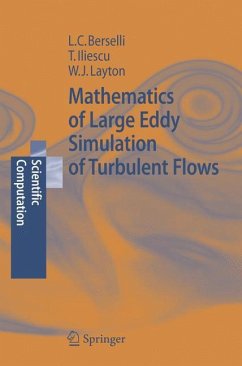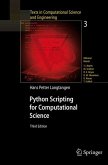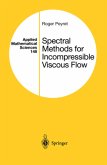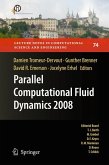Large eddy simulation (LES) is a method of scientific computation seeking to predict the dynamics of organized structures in turbulent flows by approximating local, spatial averages of the flow. Since its birth in 1970, LES has undergone an explosive development and has matured into a highly-developed computational technology. It uses the tools of turbulence theory and the experience gained from practical computation.
This book focuses on the mathematical foundations of LES and its models and provides a connection between the powerful tools of applied mathematics, partial differential equations and LES. Thus, it is concerned with fundamental aspects not treated so deeply in the other books in the field, aspects such as well-posedness of the models, their energy balance and the connection to the Leray theory of weak solutions of the Navier-Stokes equations. The authors give a mathematically informed and detailed treatment of an interesting selection of models, focusing on issues connected with understanding and expanding the correctness and universality of LES.
This volume offers a useful entry point into the field for PhD students in applied mathematics, computational mathematics and partial differential equations. Non-mathematicians will appreciate it as a reference that introduces them to current tools and advances in the mathematical theory of LES.
This book focuses on the mathematical foundations of LES and its models and provides a connection between the powerful tools of applied mathematics, partial differential equations and LES. Thus, it is concerned with fundamental aspects not treated so deeply in the other books in the field, aspects such as well-posedness of the models, their energy balance and the connection to the Leray theory of weak solutions of the Navier-Stokes equations. The authors give a mathematically informed and detailed treatment of an interesting selection of models, focusing on issues connected with understanding and expanding the correctness and universality of LES.
This volume offers a useful entry point into the field for PhD students in applied mathematics, computational mathematics and partial differential equations. Non-mathematicians will appreciate it as a reference that introduces them to current tools and advances in the mathematical theory of LES.
From the reviews: "This comprehensive book is the only one of its kind devoted entirely to the mathematical foundations of LES and its models. It collects together some of the fundamental ideas and results scattered throughout the LES literature and embeds them in a homogeneous and rigorous mathematical framework. ... it is well documented and referenced. ... This book will be very useful for Ph. D. students in computational mathematics and applied mathematicians ... ." (Bertrand Michaux, Mathematical Reviews, Issue 2006 h) "According to the authors, 'Large eddy simulation, LES, is about approximating local, spatial averages of turbulent flows'. ... The authors accomplish this aim with a reasonable balance between the physics of fluids and the mathematical theory of Navier-Stokes equations. ... a large variety of numerical simulations are carried out. The book addresses to graduate students as well as to a broad class of researchers ... . It is elegantly structured with clear and precise statements, and the graphical material is suggestive." (Calin Ioan Gheorghiu, Zentralblatt MATH, Vol. 1089 (15), 2006) "The authors of the book under review are a particular successful group of mathematicians addressing this task, and they never lose sight of the application and the empirical LES modelling. ... In conclusion, the authors have written a book which provides a mathematical background on current large-eddy-simulation modelling approaches. ... a researcher on LES model development will find a wealth of useful information." (Nikolaus Adams, Journal of Fluid Mechanics, Vol. 582, 2007)








